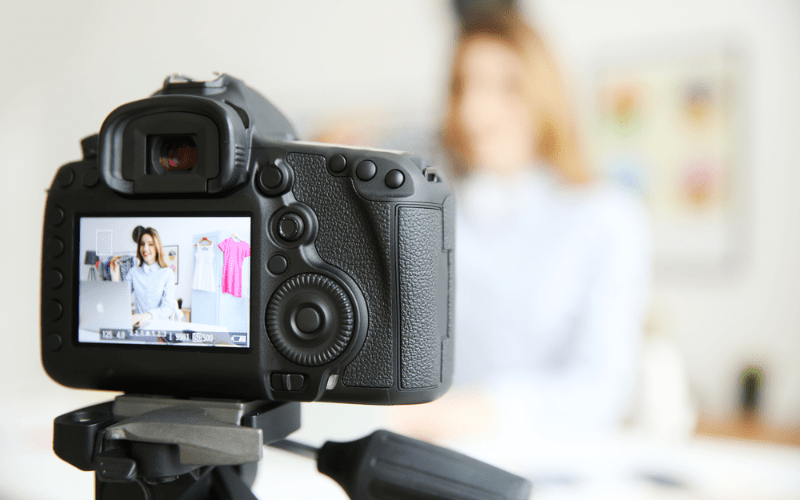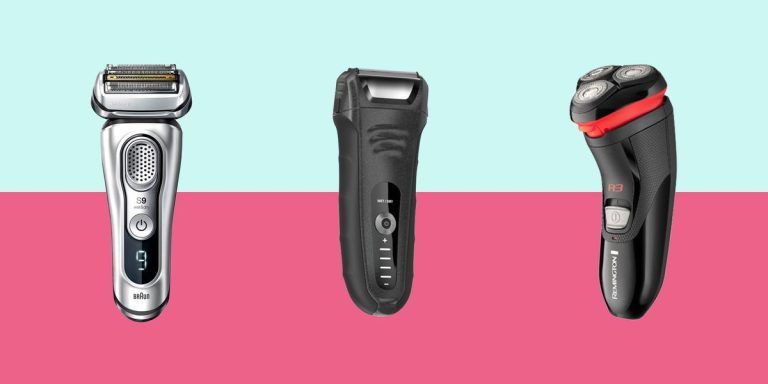Join the millions that have trusted Haffprice.net to help them make smarter buying decisions. Let our independent expert reviews and data-driven shopping recommendations help you find the digital camera that’s right for you.
#1


9.8
Canon EOS Rebel T7 Digital Camera Pro Bundle
- Type of Camera: DSLR
- Megapixels: 24.1
- Video Resolution: 1080p FHD
- Optical Zoom: 18-55mm, 75-300mm, 500mm
- Screen: 3″ LCD
- WiFi: Yes
- Image Sensor: APS-C CMOS
- Image Processor: DIGIC 4+
- Image Stabilization: Optical
- Compatible Memory Card: SD, SDHC, SDXC
Read Full Review
#2


9.6
Canon EOS Rebel T7 Digital Camera
- Type of Camera: DSLR
- Megapixels: 24.1
- Video Resolution: 1080p FHD
- Optical Zoom: 18-55mm, 75-300mm
- Screen: 3″ LCD
- WiFi: Yes
- Image Sensor: APS-C CMOS
- Image Processor: DIGIC 4+
- Image Stabilization: Optical
- Compatible Memory Card: SD, SDHC, SDXC
Read Full Review
#3
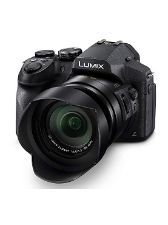

9.4
Panasonic Lumix FZ300 Digital Camera
- Type of Camera: Point-and-shoot
- Megapixels: 12.1
- Video Resolution: 4K UHD
- Optical Zoom: 24x
- Screen: 3″ touchscreen
- WiFi: Yes
- Image Sensor: 1/2.3″ MOS
- Image Processor: Venus Engine
- Image Stabilization: Optical
- Compatible Memory Card: SD, SDHC, SDXC
#4
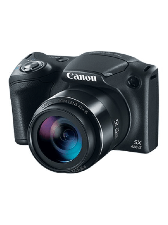

9.1
Canon PowerShot SX420 IS Digital Camera
- Type of Camera: Point-and-shoot
- Megapixels: 20
- Video Resolution: 720p HD
- Optical Zoom: 42x
- Screen: 3″ LCD
- WiFi: Yes
- Image Sensor: 1/2.3″ CCD
- Image Processor: DIGIC 4+
- Image Stabilization: Optical
- Compatible Memory Card: SD, SDHC, SDXC
#5
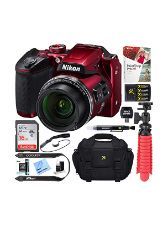

9.0
Nikon Coolpix B500 Digital Camera Bundle (Renewed)
- Type of Camera: Point-and-shoot
- Megapixels: 16
- Video Resolution: 1080p FHD
- Optical Zoom: 40x
- Screen: 3″ tilting LCD
- WiFi: Yes
- Image Sensor: 1/2.3″ BSI CMOS
- Image Processor: Unknown
- Image Stabilization: Vibration reduction
- Compatible Memory Card: SD, SDHC, SDXC
#6
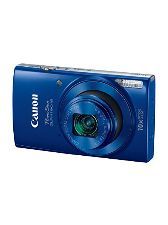

8.8
Canon PowerShot ELPH 190 Digital Camera
- Type of Camera: Point-and-shoot
- Megapixels: 20
- Video Resolution: 720p HD
- Optical Zoom: 10x
- Screen: 2.7″ LCD
- WiFi: Yes
- Image Sensor: 1/2.3″ CCD
- Image Processor: DIGIC 4+
- Image Stabilization: Optical
- Compatible Memory Card: SD, SDHC, SDXC
#7
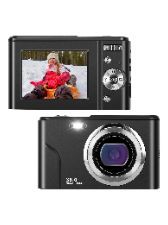

8.7
IEBRT Digital Camera
- Type of Camera: Point-and-shoot
- Megapixels: 36
- Video Resolution: 1080p FHD
- Optical Zoom: 16x
- Screen: 2.4″ LCD
- WiFi: No
- Image Sensor: Unknown
- Image Processor: Unknown
- Image Stabilization: None
- Compatible Memory Card: SD, SDHC
#8


8.5
Kodak Pixpro AZ412 Digital Camera
- Type of Camera: Point-and-shoot
- Megapixels: 16.1
- Video Resolution: 720p HD
- Optical Zoom: 42x
- Screen: 3″ LCD
- WiFi: No
- Image Sensor: 1/2.3″ CCD
- Image Processor: Unknown
- Image Stabilization: Optical
- Compatible Memory Card: SD, SDHC
#9
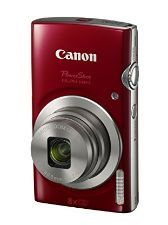

8.4
Canon PowerShot ELPH 180 Red Digital Camera
- Type of Camera: Point-and-shoot
- Megapixels: 20
- Video Resolution: 720p HD
- Optical Zoom: 8x
- Screen: 2.7″ LCD
- WiFi: No
- Image Sensor: 1/2.3″ CCD
- Image Processor: DIGIC 4+
- Image Stabilization: Digital
- Compatible Memory Card: SD, SDHC, SDXC, Eye-Fi
#10
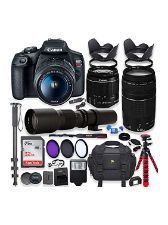

8.2
Canon EOS Rebel T6 DSLR Camera Bundle
- Type of Camera: DSLR
- Megapixels: 18
- Video Resolution: 1080p FHD
- Optical Zoom: 18-55mm, 75-300mm, 500mm
- Screen: 3″ LCD
- WiFi: Yes
- Image Sensor: APS-C CMOS
- Image Processor: DIGIC 4+
- Image Stabilization: Unknown
- Compatible Memory Card: SD, SDHC, SDXC, Eye-Fi
We also considered 3 other:
Our Top Choice
#1


9.8
Canon EOS Rebel T7 Digital Camera Pro Bundle
- Type of Camera: DSLR
- Megapixels: 24.1
- Video Resolution: 1080p FHD
- Optical Zoom: 18-55mm, 75-300mm, 500mm
- Screen: 3″ LCD
- WiFi: Yes
- Image Sensor: APS-C CMOS
- Image Processor: DIGIC 4+
- Image Stabilization: Optical
- Compatible Memory Card: SD, SDHC, SDXC
Read Full Review
About Our Rankings:
Our recommendations are based on expert comparisons between available products in each product category. For digital camera, we chose the topics that we think matter most to our users, and provide consise, clear comparisons of the features that matter. Our rankings change day-to-day based on our proprietary algorithms, that crunch data to identify top-performing products and tailor recommendations to exactly what our readers are looking for.

64
Models
Evaluated

7
Topics Considered

19
Hours of Research

40,322
Purchases Analyzed
Digital Camera Buyer's Guide
With smartphone cameras becoming more and more advanced, you might wonder if you need anything more—who needs a telephoto lens when your smartphone packs a pretty hefty optical zoom itself, not to mention all those filters and easy-to-use editing apps?
High-quality photos may be unnecessary when it comes to taking that random selfie of yourself at a concert or a picture of your perfectly-prepared dinner martini to share on social media; but when it comes to a more professional, artistic looking image, smartphone cameras simply can’t offer what a digital camera can.
There are many reasons you might want to upgrade, but whatever the reason, it’s easy to get lost inside the terminology of digital cameras. With all the different makes, models, and technicalities, it can feel almost as complicated as buying a car!
We have distilled the factors down to a few of the most important things to consider when choosing a digital camera.
How You’ll Use Your Digital Camera
Perhaps the most important factor when selecting a digital camera are the ways you will be using it—will you be traveling through different countries and landscapes that you want to photograph? Are you using the camera as a marketing tool for your business or blog? Or, for the most part, will you be using your camera as a fun tool to better capture everyday life?
DSLR vs. Mirrorless Digital Cameras
While there are point-and-shoot cameras that offer a better quality than your smartphone, in general, when you want higher quality, you will end up choosing either a DSLR (digital single-lens reflex) or a mirrorless camera.
DSLR
DSLRs are considered the cameras of professionals—from fashion shoots to wildlife photographers, these digital cameras are the rock stars of the photography world. With a variety of lenses to choose from, and a superior capacity to handle low-light conditions, they work for just about any situation.
DSLRs work like their predecessor, the 35mm—they utilize a mirror and a prism to give you a preview of your photo through the viewfinder. That image is captured exactly as you see it when the shutter opens. DSLRs generally have superior autofocus speeds, and are considered easier to shoot with in terms of expected results—what you see through the lens is what you get.
However, with all the various lenses as well as the mirror mechanism, DSLRs tend to be bulkier than their counterparts.
Mirrorless Camera
With mirrorless camera models, the light passes directly through the lens and onto the image sensor. There is no reflection on the mirror, and the image you see through the viewfinder is more of a simulation than an exact optical picture of the final result.
This type of digital camera has an appealing lighter and more compact design; but in general, they perform less well in low-light situations. They also don’t quite measure up to the DSLR when it comes to photographing from a distance (such as sporting events or wildlife)—the long lenses that are available with DSLR simply aren’t as varied with mirrorless digital cameras.
However, because there is one less step in the mirrorless digital camera process, they tend to move more quickly than a DSLR when it comes to taking multiple photos—so if you need to have a flurry of photos taken in seconds, this is a factor to consider.
In general, mirrorless cameras are a strong choice, given their better portability. Depending on what you are shooting, a mirrorless camera could be the best choice for your situation—so don’t rule it out.

Digital Cameras for Everyday Photography
So called “Point-and-Shoot” cameras are less complicated and more compact than their peers. Most feature generous megapixels (a measurement of a digital camera’s resolution with a megapixel equaling one million pixels) sufficient enough to capture a decent photo.
Still, compact digital cameras simply can’t measure up to their DSLR and mirrorless peers when it comes to true image quality. With their smaller camera sensors and limited control over shutter speed, they are less likely to get you the perfect shot.
If you are planning to photograph a prowling cheetah from afar with your point-and-shoot digital camera, don’t be surprised if your cheetah looks more like a blur of orange and black spots.
Point-and-shoot digital cameras do have other benefits, though. For example, they are easier to carry, and often have a variety of fun features such as beautifying enhancements or even facial recognition.
But keep in mind—while these digital cameras are easier to use, they offer little flexibility to upgrade. They utilize one lens, usually with a zoom, but you can’t change this lens later on as your photography skills progress. You are stuck with what you originally purchased.
If you anticipate yourself growing in knowledge and creativity with your photography, a DSLR or mirrorless is the safer way to go.
Best Digital Cameras for Videography
If you have an important event coming up, such as a wedding or a graduation, odds are you have considered filming the event with your new digital camera. You’re in luck—today’s digital cameras offer a powerful and effective way to shoot high-quality footage beyond your parents’ generation of camcorders.
Overall, the less complicated mechanisms of a mirrorless cameras make them a better choice than DSLR, but here are a few other major considerations:
Low-light performance
Will the camera you are considering navigate low-light situations well? When it comes to this aspect of a digital camera, the best way to assess might be to read what other users have to say.
Image Quality
Most digital cameras come in at 1080p minimum—anything below that is considered not worth getting. However, 4k is the master of the filmmaker’s universe, with nearly every streaming platform service requiring it.
4K resolution is exactly 3840 x 2160 pixels, with the other widely used 1080P coming in at 1920 x 1080 pixels. But if you aren’t a “burgeoning” filmmaker whose footage will be watched on a big screen or on a 4k television screen, this feature might not be necessary.
It should be noted that digital cameras are limited to 30 minutes of recording time (29 minutes, 59 seconds to be exact). This has nothing to do with technology but with terminology. Digital camera manufacturers avoid anything over 30 minutes, and the subsequent title as a “video camera,” which requires more stringent taxation and importation legalities.
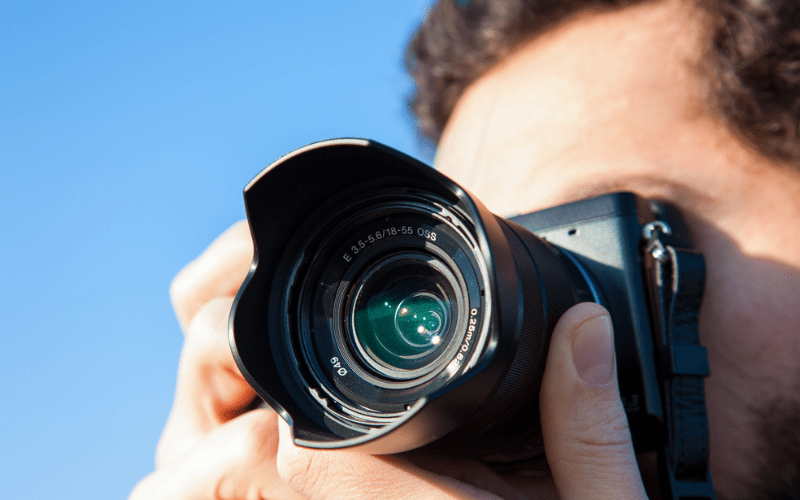
Other Things to Watch for When Choosing Your Digital Camera
Battery Life
Mirrorless digital cameras tend to have a lower battery life to accommodate the LCD screens they utilize to preview the images.
Accessories
From lens wipes to straps to storage cases, many cameras come with a set of useful accessories.
Memory/Storage/WiFi
Some digital cameras, especially in the point-and-shoot category, offer the ability to use apps to manage the photos—from image focus settings, to storage and transfer, to social media sharing. WiFi connectivity is something to watch for if being able to easily transfer your images from your device to your phone or laptop is important to you.
Built-in Microphones
Many models come with built-in microphones, but use caution—often these microphones pick up on the sounds of the camera’s inner workings.
The Best Digital Camera to Document Your Life
In the end, there is probably no such thing as the “perfect” digital camera. The best digital camera is the one that works best for your needs, whether you are capturing rainstorms or rock concerts. As photographers say, the best camera is the one you will be happy to have in your hands when that photo-worthy moment arrives. Choose the digital camera you will enjoy having as a companion on your adventures—and have fun!
ABOUT BUYER'S GUIDE
Navigating the many choices for every consumer purchase can be challenging. Our team spends hours doing research, combing through forums, and reading consumer reviews on even the most basic of household items, and we summarize that information in clear, precise comparisons.
Join the millions that have trusted BuyersGuide.org to help them make smarter buying decisions. We help our readers spend their money wisely and find the right product to suit their specific needs. Our independent expert reviews and data-driven shopping recommendations empower you find the digital camera that’s right for you.
We leverage user data to understand decision-making and put the best products in front of each user. We tailor our comparisons to what matters to our user’s needs, specific or broad. We keep our content up to date, we are constantly looking for new merchants and products to compare, and we are quick to remove any that are outdated or no longer meeting our standards.
Our rankings change day-to-day based on our proprietary algorithms that crunch data to identify top-performing products and tailor recommendations to exactly what our readers are looking for.



